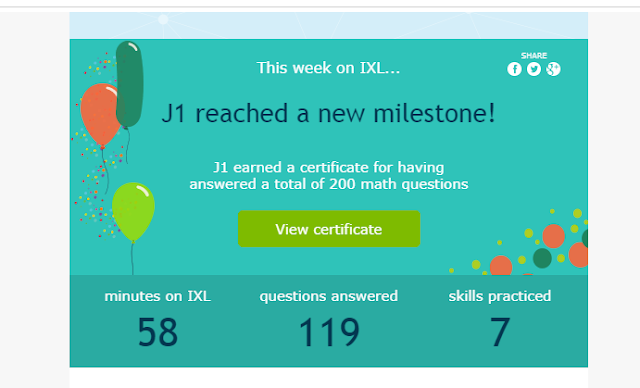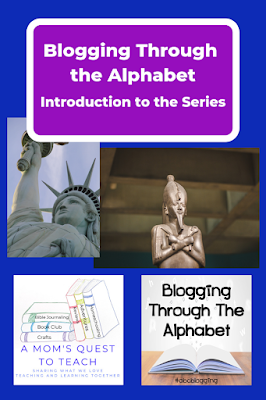Teaching mathematics, even during students' younger years, sometimes causes worry and concern for homeschooling parents. Having the ability to review Dimensions Math PK-5 from Singapore Math Inc. has been a great opportunity for our family as we are now able to set aside a specific time for mathematics in our day. Dimensions Math PK-5 is a series designed for U.S. teachers and students but one that I am easily using in our homeschool setting.
 |
| He was excited to look through all of the materials. |
Overview of Dimensions Math PK-5
Singapore Math Inc. has updated parts of their curriculum for "clarity and relevance" while staying true to their ideas. The program starts with concrete ideas and then moves toward pictorial and abstract ideas for students. The educator, whether they are teacher or parent, is very important in the Dimensions Math curriculum.
There are several key components of the curriculum which include:
- Student Textbook
- Student Workbook
- Teacher's Guide
- Blackline Masters
Student Textbook
"Throughout the series, five characters offer suggestions on how to think about problems, remind students of strategies they've learned, and point out important information to encourage students to come up with their own solutions." – Series Overview
The Student Textbook KB is a softcover book of 192 colorful pages with activities and questions that correspond to the teacher's guide and student workbook. For example, Lesson 1 of Chapter 10 Subtraction introduces the concept of taking away to subtract. Part 1 presents a picture of four dogs with a fifth running away from the group. The exercise continues with three questions in which Spot eats dog bones and children figure out how many bones he has left.
Student Workbook
The 162+ page Student Workbook offers additional work that – for a traditional school setting – could be homework, but for our homeschool we have used them in a variety of ways. For example, in the beginning lessons our son continued to work on them right after finishing the lesson, then he began to get fidgety so we saved them for later on in the day. I could also see us saving them for him to complete with his Dad since I am the one primarily working on Dimensions KB with our son.
Teacher's Guide and Blackline Masters
The 252-page Teacher's Guide is a great asset for individuals presenting the course. It breaks down each lesson in several steps:
- Think or Explore
- Learn
- Do – Whole Group Activity
- Student Textbook Pages – Small Group Activity
- Extend
 As you are planning your day, you can review the objectives and materials needed prior to starting the lesson. Objectives range from "identify numbers 1 more than and 1 less than a given number within 20" to "distinguish between addition and subtraction situations involving adding on or taking away" depending upon the lesson. All of the paper materials are available through the textbook or workbook and the blackline masters online which I printed out on colored paper for our child.
As you are planning your day, you can review the objectives and materials needed prior to starting the lesson. Objectives range from "identify numbers 1 more than and 1 less than a given number within 20" to "distinguish between addition and subtraction situations involving adding on or taking away" depending upon the lesson. All of the paper materials are available through the textbook or workbook and the blackline masters online which I printed out on colored paper for our child.The Teacher's Guide continues with the lesson written out clearly which you can read ahead of time, while you are working through the lesson with your children, or do both (which is what I did). There are multiple activities from things that require a group (as the books are geared towards a classroom setting) to activities that can be done individually or in pairs allowing more than one child to work on learning the skills together.
One whole group activity is "Shout and Clap" where children take turns choosing a starting number from 5 to 9 and adding 1, 2, or 3. Together they shout the number and clap to count on. This could be varied by choosing different actions and in a homeschool setting older and younger siblings could play the game together.
If you are curious about what materials beyond the textbook, workbook, and teacher's guide you might need, you can see the list of materials on the Dimensions Math website along with lots of other useful information. There are also videos for the PKA-B and KA grades (which our three-year-old daughter watched with me and enjoyed).
What We Are Using - Dimensions Math KB
Dimensions Math KB focuses upon the following topics:
- Numbers to 20
- Number Bonds
- Addition
- Subtraction
- Addition and Subtraction
- Numbers to 100
- Time
- Money
Our family chose KB, after taking the placement test. Our five-year-old son already has a firm understanding of many of the topics in KA (numbers to 10, shapes, etc), so we opted for the next level as he is just starting to work on more advanced addition and subtraction and learning about money. Each level (PK-5) offers two books, A and B, which would correspond with Semester 1 and Semester 2 of a school year.
In addition to the Teacher's Guide, Student Textbook, and Student Workbook, I also needed to download and print a variety of Blackline Masters for the lessons. Some of the lessons also call for other materials such as counters, dice, dominoes, wooden blocks, and linking cubes. One might have these items at home or you may need to purchase them or substitute with something else.
 |
| Some of the flashcards made from the Blackline Masters. Our children are matching numbers to ten-frame cards. |
The flexibility and variety of activities described in each lesson allow me to really tailor the lesson to the needs of our five-year-old. For example, in Lesson 6 the objective is for children to read the number words 11 to 15. Through exploration of number and word cards, ten-frame cards, dominoes, linking cubes, the textbook, and workbook, children can learn how to properly read and identify the number words in a variety of ways. There are opportunities for games (with domino match, roll and race, matching, and memory) and through the use of the textbook and workbook children can practice their writing of the numbers. We were able to use many of the flash cards provided via the Blackline Masters as well as math objects and tools we already owned to learn about the numbers 11 to 15.
What We Like
The spiral bound design of the Teacher's Guide is excellent. I like that the pages are sturdy enough that I can paperclip the necessary papers and flashcards to them without the pages tearing. It lays open nice and flat so I can see both pages at once or I can have it set up so only one page shows at a time.
 |
| The Teacher's Guide can lay flat on your table, desk, or sofa. |
The student books are also made of quality materials. The pages can take a number of mistakes and erasures being made which is important when it comes to studying mathematics. The directions are clear and straightforward which means our five-year-old can start working on the pages without too much direction.
Having additional assistance at the bottom of the student workbook pages is also good if you are using this in a classroom setting or using the workbook as "homework" to be done with the non-homeschooling parent. For example, in the lesson "Add Up to 5 and 6" the "Using this page" section directs parents or teachers to "have students complete the number sentences for addition up to 5." While this may seem straightforward, it may provide just the right amount of additional information for the non-teaching parent or person helping the child.
The lack of answers in the student books is also fantastic. While many children will not seek out the answers to cheat, there are some who may take a lazy approach or who may feel the need to check each answer and lose faith in themselves and their ability. (Don't worry – the answers are in the Teacher's Guide.)
Even though our five-year-old son is the primary student using the materials, our three-year-old daughter still joins us for the activities. So while he reads the textbook pages and completes assignments in the student workbook, she sits with us and uses the flash cards and other manipulatives that I have collected for our lessons.
Our five-year-old son says he likes both the Student Textbook and Student Workbook when I asked him what he liked best. "They don't just teach about numbers. They also teach other stuff." (He is looking forward to when we study time and money towards the end of the books.)
If you would like to learn more about Singapore Math Inc. and Dimensions Math PK-5, please visit the following sites:
Other members of the Homeschool Review Crew had the chance to review other levels of Dimensions Math PK-5, please be sure to check out their reviews!

















































